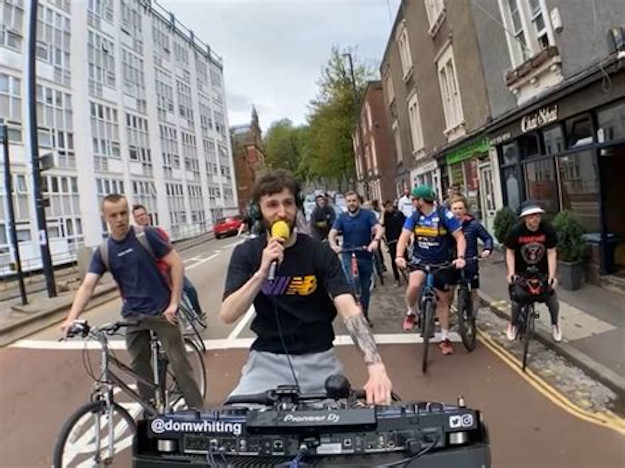The Covid pandemic made us modify our habits in many ways. Those people with a job in direct contact with other people suffered a stop or it was re-double as in the case of doctors and nurses. Dom Whiting belonged to the first group. He had worked as DJ in an event company and was open-minded enough to take advantage of the situation.
He modified his bicycle to include a mixing desk and a microphone on its handlebar, and carried on with outdoor music sessions in order for people to spend a good time dancing while pedaling. This active user of social nets has played in Dublin, Brussels or Barcelona to name a few. His parties include colored smoke bombs and confetti. To complement it, loudspeakers are attached to some other bicycles so that you can hear the music no matter where you are located in the pack. But the process of establishing a performance starts before since he first visits the city, them choose the route and finally pedal on it twice before the final event.
His passion for bikes started when going to school as it was the usual way of transport and he had continued using it to go to work from time to time.

